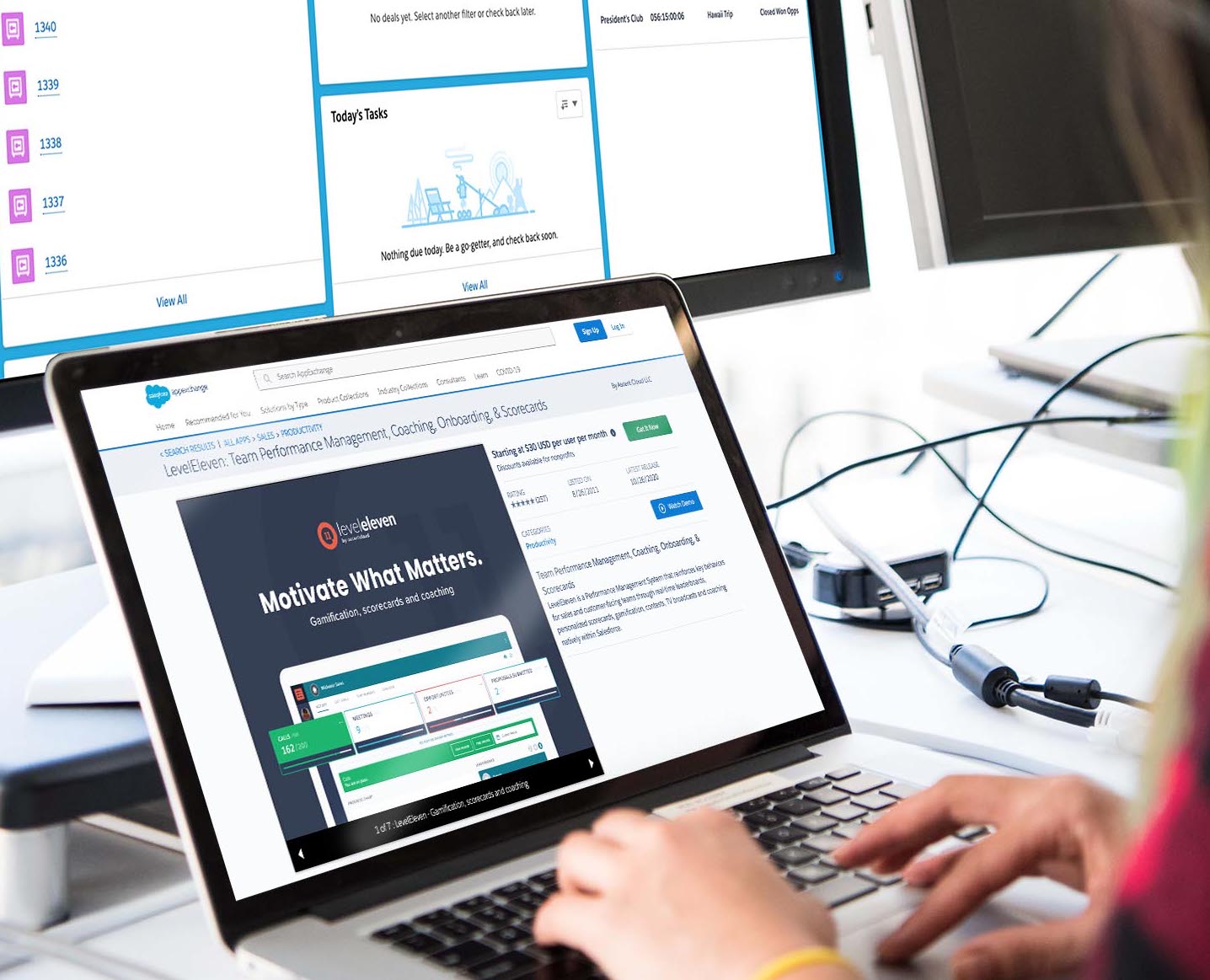Why You Should Care if an App Is Native to Salesforce
SaaS companies often talk about their products or solutions being “Salesforce native,” but do you know exactly what that means?
If a solution is truly native, it means that it is built on Salesforce’s own platform. The data and data processing occurs right within your instance of Salesforce, and is not stored on an external server. Therefore, no integrations are needed to connect the app with Salesforce.
Alternatively, some non-native apps may take a longer time to implement and get started on because of the multiple steps involved in integrating with Salesforce. Additionally, some non-native apps require the use of an API to connect the app that exists outside the Salesforce platform in order to get data from that app into Salesforce, or vice-versa.
When it comes to choosing a tool, you may think this is a minor issue that doesn’t make much of a difference. However, you should take a moment to look closely at the important differences that do exist between native and non-native apps, and determine whether they are important to you and your business.
Benefits of Using a Native Salesforce App
In general, it is recommended that you choose a native Salesforce app over a non-native one if you have the opportunity. The primary benefits of choosing a solution that is native to Salesforce are the accuracy and speed of data processing, mitigation of the risk of data loss, and overall security.
Data Integrity – 100% Data Accuracy
Your data will always be accurate, so you really can use Salesforce as that “single source of truth.” Native apps don’t have to rely on a transfer of data back and forth with Salesforce, because the data is already housed in one place. A native app is the only app that can truthfully claim to be displaying data “in real-time” (although some non-native apps still claim to).
When you keep everything on one platform, there is no risk of the data needing to resync or update before being displayed. You’ll thereby avoid risks of data loss, delays in data processing, duplicate data, and a host of other problems.
Reliability – Safe from Disruption
You never have to worry that your connection to Salesforce will be interrupted, or that there will be some sort of data transfer error that causes a disruption. As long as Salesforce is up and running, your native app will be too, and you won’t have to worry about the reliability of a 3rd-party server.
Equally important is the fact that your data is more secure if it never has to leave the platform. In a time when data security and privacy is becoming increasingly at risk, you can trust that your data is safe with native apps because they must adhere to the same rigorous security standards that Salesforce has. If you trust Salesforce with your data, you can trust native apps.
Risks of Non-Native Salesforce Apps
If that wasn’t enough to convince you, there are dangers you may not have considered with choosing a non-native app. There are serious implications for data security, accuracy, and speed, among other potential pitfalls. With an app that is not native to Salesforce, you might be facing risks of data not being accurate in real-time, disconnection, and data transfer failures that can cause you to lose your data.
Potential for Disconnection and Even Possible Data Loss
Perhaps the biggest threat of a non-native app is its potentially fragile connection to Salesforce. Whereas with a native app, all the necessary data already lives within the Salesforce ecosystem, third-party apps sometimes have to rely on complex connections to Salesforce to send and receive data.
Apps that are not native can lose connection to Salesforce if the person who installed or authorized the app loses their admin permissions, for example, or has their account deleted after leaving the company. If this happens, you’ll have to go through the process to reauthenticate the connection with Salesforce all over again. This presents a danger of losing historical and current data and increases the likelihood of duplicate data being created.
Data Import Failures Could Mean Everything is Lost
For some non-native apps, if you come across an error during your data transfer between Salesforce and the app that causes the transfer to fail, you could lose all the data.
For example, say you’re transferring 1,000 records between Salesforce and the non-native app, but the 999th record fails – all other records are lost too. You’ll have to go back and start from the beginning to get all of that data transferred. Unfortunately, there is no “partial” transfer, it’s all-or-nothing.
Not in “Real-Time” but, in Fact, Delayed
If your new app is not Salesforce native, then sorry, but sadly your data is not visible in real-time. Perhaps the delay is only 30 seconds or 1 minute, but as any salesperson knows, every second counts.
With a non-native app, the API job has to sit in a queue with all the other processes Salesforce is completing – meaning there is no guaranteed time-frame, especially if the jobs processed before it are large and/or slow. In some cases, we’ve even seen it take up to 10 minutes or more!
And one more thing – beware the salesperson who claims the delays are minimal enough that they’re inconsequential. They may claim the necessary data is sent every 45 seconds or less, but remember, that data not only has to be sent, but received and displayed. Maybe the data is sent from Salesforce every 45 seconds, but it takes another 10 minutes for the app to receive and display that information. There is a risk that they’re giving you the best case scenario, and they aren’t telling you about any potential roadblocks that cause much longer delays.

Examples of Native Salesforce Apps
Now that you’re familiar with the ups and downs of native vs. non-native Salesforce apps, you may be wondering where to start when it comes to looking for your next solution – after all, there are over 3,000 to choose from on the AppExchange. Here’s are some of our favorite native Salesforce apps, along with brief descriptions pulled from their AppExchange listings:
- LeanData – LeanData solutions speed conversions and pipeline growth by automating go-to-market operations with easy-to-use tools that optimize productivity and efficiency.
- TaskRay – TaskRay makes onboarding customers fast & efficient with built-in best practices around handoffs from sales to customer onboarding to customer success, powerful insights into onboarding performance & templates to help guide your onboarding projects.
- DupeBlocker – DupeBlocker is an enterprise capable, real-time duplicate prevention solution developed on the force.com platform. Admins can stop duplicates from end-user entry, web-to-lead, and other integrated systems using out-of-the-box or custom configuration.
Choose the Safest Bet with Salesforce-Native Applications
Now, maybe you’re interested in training to become a Salesforce developer on top of everything else you have to do to lead your team on a daily basis – more power to you. Perhaps you like a challenge, and learning Apex or using Process & Flow Builder doesn’t scare you – we aren’t sure. But if you’re like many of our customers who want an easy to implement, everything-done-for-you solution, you should consider choosing an app that is native to Salesforce.
That said, we invite you to take a look at LevelEleven’s listing on the Salesforce AppExchange to hear from real customers who have trusted us with their investment in a Salesforce-native sales performance management solution.



